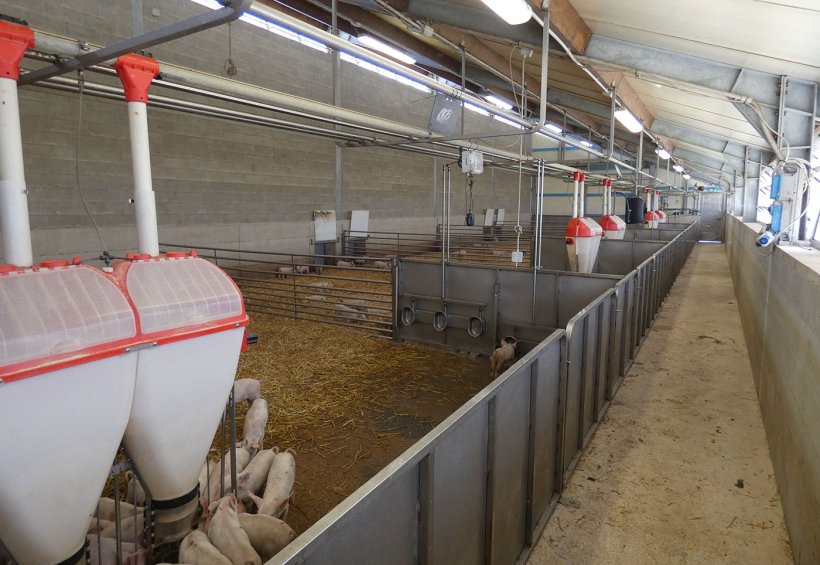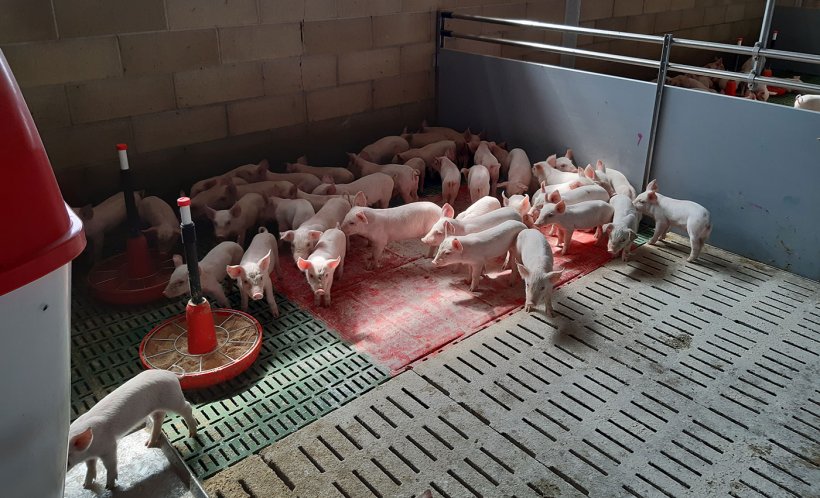The objective of the INTACT project (Technical and economic indications for reducing the need for tail docking in pig farming) is to increase the swine industry's competitiveness and profitability through a technical and economic assessment of the measures needed to reduce the use of this practice.
The project is organized by the Department of Veterinary Medicine and Animal Sciences of the University of Milan, with the participation of the CRPA Foundation Studies and Research of Reggio Emilia and three pig farms in Lombardy, and co-financed by the EAFRD under Operation 16.1.01 “EIP Operational Groups” of the 2014-2020 RDP of the Lombardy Region.

Field trials
Trials were conducted on farms associated with the project to evaluate and verify the technical, economic, and environmental aspects of the measures proposed in the improvement plans drawn up based on the results of the ClassyFarm self-assessment questionnaires.
Due to the state of emergency caused by the spread of African swine fever, researchers' access to farms was complicated and subject to severe restrictions. It was therefore necessary to redefine tasks and train farm staff to take charge of data collection.
Farm 1
The trial focused on the growing and finishing phase and included 192 pigs housed in pens with solid flooring and an outdoor, fully slatted defecation area. The pigs were divided equally into the following groups:
- INNOVATION, long tail with straw in rack,
- CONTROL, docked tail with a trunk suspended by a chain.
The first group of animals was monitored from March to October 2024, and the second from April to November 2024. During the trials, the number of tail and ear lesions was recorded, along with certain environmental parameters (noxious gases, temperature, and humidity).
Measurements were taken one week after the animals' arrival (at 30 kg) and two months after (at 90 kg).
Analysis of the data revealed no differences between the groups: no tail or ear injuries were recorded. The values consistently remained between ClassyFarm's improvable and optimal levels.
Farm 2
The trial focused on the nursery and finishing phases.
In the nursery, the pigs were housed in pens with solid flooring and straw bedding. During finishing, they were housed in pens with solid flooring and an outdoor slatted defecation area.

The trial was conducted on 1,800 nursery pigs (7-30 kg) and 144 finishing pigs (30-170 kg) with intact tails. A comparison between two groups was not evaluated, but rather, there was periodic monitoring of environmental parameters using fixed and portable instruments and direct indicators in the animals, in particular:
- Noxious gases, temperature, humidity, lighting, and air velocity;
- Tail and ear lesions;
- Body condition score (in the nursery);
- Cleanliness of the animals;
The trial was conducted from February to April 2024 in the nursery period and from May to November 2024 in the finishing period.
Table 1 shows the scores obtained in the assessment of direct indicators on animals, while Table 2 shows the average values of environmental parameters recorded during the monitoring period. The analysis and processing of the data highlighted the importance of continuous monitoring of environmental parameters, particularly concentrations of noxious gases. Furthermore, no differences were observed between the values recorded by fixed and portable instruments, once again demonstrating the validity of both data collection methods.
Table 1. Farm 1. Evaluation of direct indicators in animals by phase (number of animals presenting the problem).

| Phase | Tail lesions | Ear lesions | Deficient cleanliness | Very thin animals |
| Nursery | 0 | 14 | 2 | 4 |
|---|---|---|---|---|
| Finishing | 5 | 4 | 6 | - |
Table 2. Farm 2. Average values of environmental parameters recorded during the trial.
| Phase | Area | Illum. | Temp. | Humidity | Air speed | NH3 | CO2 |
|---|---|---|---|---|---|---|---|
| Nursery | Bedding | 161 lux | 22 °C | 85 % | 0.1 m/s | 4 ppm | 2,200 ppm |
| Solid floor | 287 lux | 21 °C | 82 % | - | - | - | |
| Finishing | Slatted floor | 28.2 °C | 85.9 % | 0.1 m/s | <4 ppm | 950 ppm |
Farm 3
Two nursery trials were conducted on this farm, with a total of 2,454 pigs housed in pens with partially slatted floors. The pigs were divided equally into the following groups:
- INNOVATION, long tail with straw in the feeder,
- CONTROL, docked tail with straw in the feeder and other enrichment material provided every two weeks (natural fiber rope or paper strips).

The first trial was conducted from November 2023 to January 2024, and the second from March to May 2024. During the tests, data were collected on the number of tail and ear lesions, as well as environmental parameters (noxious gases, temperature, and humidity). Measurements were taken every two weeks for a total of 8 weeks (T1, T2, T3, T4).
During the first trial, regardless of the type of environmental enrichment, all animals presented tail lesions, some of them severe. In the INNOVATION group, the lesions appeared two weeks later than in the CONTROL group. The concentrations of noxious gases recorded always exceeded the alert thresholds, so the trial was repeated, modifying the ventilation and reviewing the feed formulation to detect possible amino acid deficiencies. The results of the second trial, which were clearly better, are shown in Table 3.
Table 3. Farm 3. Measurement of environmental parameters and evaluation of direct indicators in animals (number of animals presenting the problem).
| Gas concentration (ppm) | Number of animals that present problems | ||||
|---|---|---|---|---|---|
| NH3 | CO2 | CONTROL | INNOVATION | ||
| Trial 2 | T1 | 5.4 | 1,700 | 0 | 0 |
| T2 | 4.7 | 1,600 | 30 (score 1) | 0 | |
| T3 | 2.5 | 1,200 | 40 (score 1) |
40 (score 1) |
|
| T4 | 2.0 | 1,160 | 0 | 0 | |
| Exit | 1.6 | 1,120 | 0 | 0 | |


